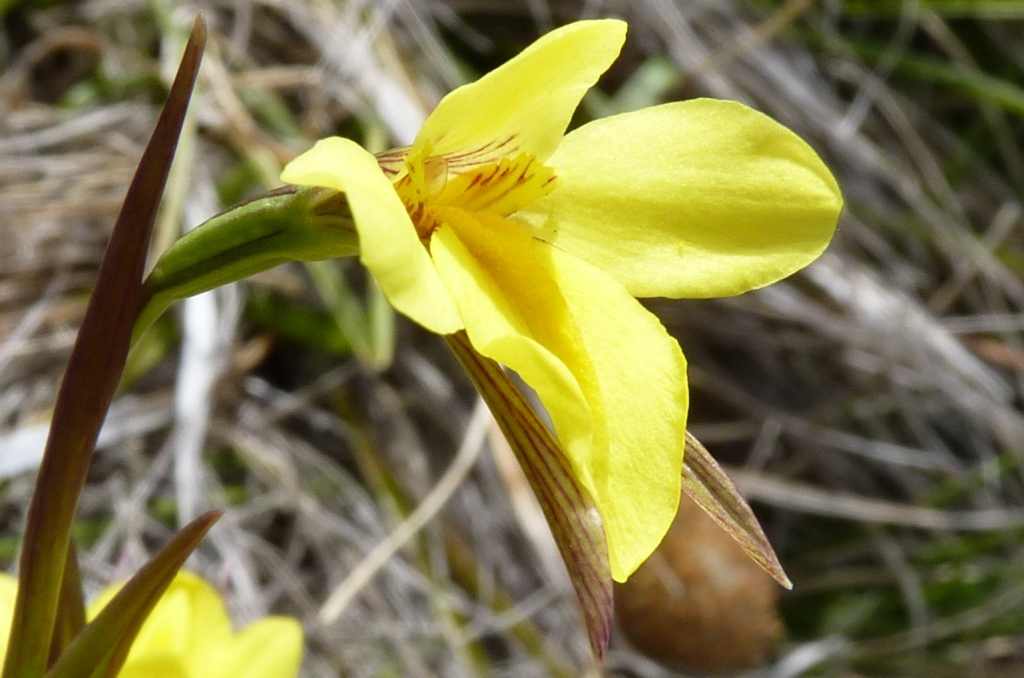Diuris monticola
D.L.JonesFlowering plant slender, 15–35 cm tall. Leaves mostly 5–9, linear, 5–20 cm long, in a loose, semi-erect tussock. Flowers 1–4, porrect, mostly pale to bright yellow with dark striations on base of dorsal sepal; pedicel (excluding ovary) 2–5 cm long, slender, partly enclosed within bract; dorsal sepal porrect basally then obliquely erect, ovate, 9–12 mm long, shorter than other perianth parts; lateral sepals obliquely deflexed, usually parallel, linear-oblanceolate, 15–25 mm long, brownish green; petals spreading widely, 10–18 mm long, claw blackish, lamina ovate to ovate-elliptic, yellow. Labellum porrect to obliquely deflexed, yellow, 12–17 mm long, 3-lobed; lateral lobes small, linear to narrowly oblong-cuneate, outer margins toothed; mid-lobe almost flat, c. 3 times as long as the lateral lobes, ovate to broadly ovate, narrowed at base, with 2 widely separated, pubescent, longitudinal ridges extending shortly beyond base, a single, less distinct ridge continuing c. halfway along lamina. Column wings slightly longer than anther. Flowers Nov.–Jan.
CVU, NIS, EGU, HNF, MonT, VAlp. Also NSW, ACT, Tas. Often grows in montane grassland and alpine meadows, montane forest and woodland, particularly Snow Gum woodland, in moist clay loams and peaty loams.
Distinguished from Diuris chryseopsis by its generally later flowering, montane to alpine habitat and slightly smaller flowers with broader perianth segments. Similar to D. subalpina but that species has only 2 leaves, 1 or 2 nodding flowers and a longer basal claw on the labellum.
 Spinning
Spinning

